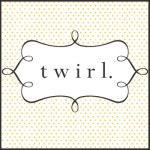I got a nice camera and everyone keeps telling me that I take really good pictures and that I should go into business. I want to make sure that I'm doing things right, and wondered if you have any tips or suggestions on what steps I should take to start a business, or if you have time to give me feedback on my images and tell me if you think I'm ready?Okay, this is a long winded answer (I know, big surprise, right?), so bear with me. First things first, I'm glad you've found something you are interested in. For me, photography has been a wonderful thing. But I'm going to give you some honest answers, and I want you to take them for what they are worth.
Taking pictures is one thing. It takes a lot of time to learn how to do it correctly. There are many things that go into a beautiful image. I'm still learning, and I imagine I will still be learning the rest of my life. Do you shoot in manual? If not, I'd suggest learning to do that really well. Get fast at it. Understand what you are doing. You also have to learn composition, angles, finding good light, post production, the list goes on. When you feel comfortable doing those things you are in a decent position to call yourself a photographer. Even then, the learning doesn't end.
While creating beautiful images is something in itself, business is a completely different beast. I encourage you to take some business classes, if you haven't already. Accounting, marketing, and so on. There are concepts that you must understand in running a successful business. There are a variety of small business associations that you can learn from. Find them. Remember that when you start a small business you don't usually have the funds to hire someone for marketing, processing, accounting, customer relationship and time management, sales, etc. You have to be all these people! And if you do it successfully then you might get the opportunity to hire out some of those positions. And, solid business policies are important!
Another thing I strongly suggest is finding out what kind of licenses you need in order to be a legitimate business. I know you are in Utah, and there are a lot of battles here in this business. Many people do not operate legal businesses, and some customers don't care because they are getting a deal. Although you can say that you don't have to fight with that, in a way you still really do. Additionally you need to be comfortable collecting and paying sales tax on everything, including understanding the whats, whens, hows, and whys.
You also need to understand that this job, while completely filling at times, can also be a real drain emotionally. You put SO MUCH into it. It can become addicting in a way, and kind of take over your life. :/ So you need to understand how to set and follow boundaries for yourself so that you can still spend time with your friends and/or family. Understand you will naturally want to live, breathe and eat photography. It really does suck you in (ask any photographer, lol).
That said, if you do feel up to it and are sincerely interested in running a photography business (not just excited at the thought that people like your images enough to pay you), then I say you should do all you can to be successful. Join photography forums. Read books. Practice, practice, practice. You will know when you are ready to start charging, and when you are, get everything in order before your launch your business. Realize you will make mistakes, and you will learn some really valuable lessons along the way.
As far as looking at your images and providing feedback, I'm happy to look at one or two, but if you'd like a more in depth review, I do offer mentoring. Let me know if you are interested and I can provide the details!















